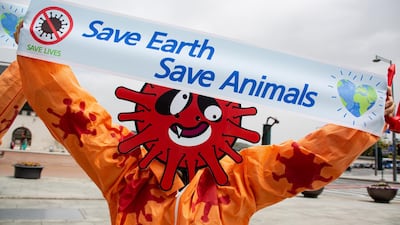Fifty years ago today, in 1970, the first Earth Day was marked.
It began in America, where a growing number of people were becoming concerned about the vast amounts of leaded gas that were being consumed through the automobile industry.
Air pollution was rife. But it was also generally accepted as a normal part of everyday life.
For the most part, the population was oblivious to the damage we were all doing to our planet.
A brief history of the Earth Day movement
Senator Gaylord Nelson, a junior senator from Wisconsin, was paying attention, however. In January 1969, he was deeply moved by a massive oil spill in Santa Barbara, California and, inspired by the student anti-war movement, he wanted to merge that rebellious spirit with a raising consciousness of air and water pollution.
Nelson decided to organise college teach-ins with the help of Pete McCloskey, a Republican congressman with a mind for conservation, and activist Denis Hayes. They chose April 22, as it was a weekday that fell between spring break and final exams, therefore ensuring as much student participation as possible.
Hayes went on to recruit 85 national staff to promote the events across the country to a broadening group of people. That's when they changed the name to Earth Day, a move that captured the media's – and the nation's – attention. Ultimately, about 20 million Americans, 10 per cent of the population at the time, were inspired to head out into the streets and public spaces to demonstrate against the environmental impacts of industrial development.
A milestone event and a catalyst for change
It was an important moment for many reasons. Not only did it spark a 50-year-long venture that is still ongoing to this day, but it also brought together a range of different communities. Groups that had been leading the fight on specific issues, such as oil spills and the use of pesticides, united under the guise of Earth Day.
Republicans and Democrats, people of varying social classes, big-city folk, farmers and businessmen all joined in.

It led to the creation of the United States Environmental Protection Agency and paved a path for the introduction of a range of new environmental laws, including the Clean Air Act.
From America to the world: Earth Day goes global
It might have taken 20 years, but Earth Day eventually went global in 1990, when a group of international environmental leaders approached Hayes. This saw 200 million people in 141 countries get involved, as a focus was put on worldwide recycling efforts.
Today, more than one billion people mark Earth Day globally. More than ever, people are aware of the detrimental impacts industry has on our planet, and they're willing to stand up and say something about it. Naturally, the internet has made it possible for organisers to reach out to people in the furthest corners of the planet.
What's new for Earth Day 2020?
Of course, firstly, many of the events will be entirely digital as we continue to try and curb the spread of Covid-19 and practice social distancing.
To mark the 50th anniversary, the Earth Day Network organisers have chosen to focus on climate action. "The enormous challenges – but also the vast opportunities – of acting on climate change have distinguished the issue as the most pressing topic for the 50th anniversary year," reads a statement on the official website.
"At the end of 2020, nations will be expected to increase their national commitments to the 2015 Paris Agreement on climate change, so the time is now for citizens to call for greater global ambition to tackle our climate crisis."
There are a number of campaigns that have been designed to engage at least one billion people. This includes Earthrise, the Great Global Cleanup, Earth Challenge 2020, Foodprints for the Future and Artists for the Earth.
Further details on each of these campaigns can be found on the website.

They've also set up the Global Advisory Committee for the 50th Anniversary of Earth Day in 2020, which enlists worldwide leaders and activists to help engage their communities. This includes actor Leonardo DiCaprio, Princess Lalla Hasna of Morocco, former president of Finland Tarja Halonen, former US Secretary of State John Kerry, actor and producer Anil Kapoor and Virgin Group founder Sir Richard Branson, to name a few.
"Earth Day 2020 will be far more than a day," the statement continues. "It must be a historic moment when citizens of the world rise up in a united call for the creativity, innovation, ambition, and bravery that we need to meet our climate crisis and seize the enormous opportunities of a zero-carbon future."
How can you get involved?
There are a number of ways, all listed on the "take action" section of the website. These include adding your voice or story to a worldwide "map of support", organising a digital event (or a physical one when social distancing regulations come to an end), spreading the word in your community through social media, downloading campaign materials and more.
Why is this movement so important?
As we deal with the global pandemic, the fact that something drastic needs to change – and urgently – has never been so prevalent.
Hayes says: "We find ourselves facing an even more dire, almost existential, set of global environmental challenges, from loss of biodiversity to climate change to plastic pollution, that call for action at all levels of government."
Earth Day Network president Kathleen Rogers says progress has slowed and "our adversaries have become better financed".
"We find ourselves today in a world facing global threats that demand a unified global response. For Earth Day 2020, we will build a new generation of environmentalist activists, engaging millions of people worldwide."


